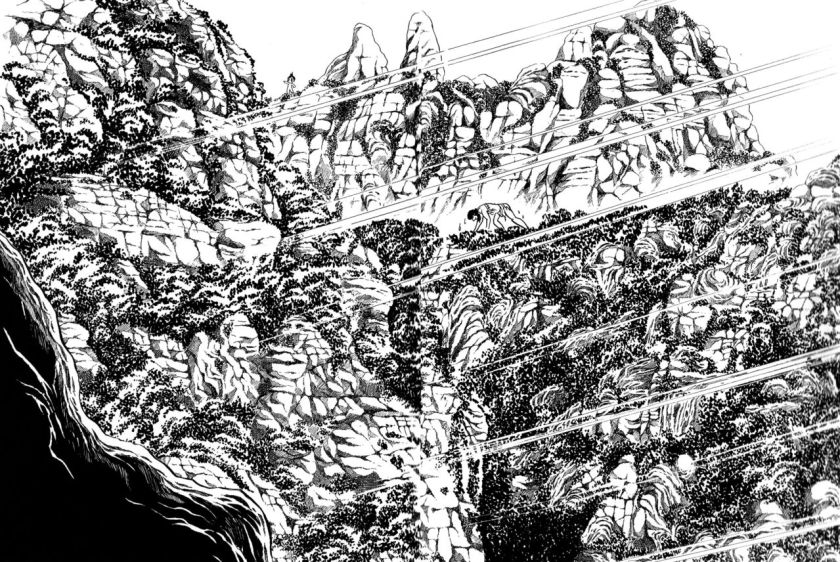Historical drama can sometimes be dangerous. Subtle twists of creative license to fit a narrative can give a false impression of the facts. Osamu Tezuka’s massive 8 volume series on the life of the Buddha is anything but subtle.
You may know Osamu Tezuka as the creator of Astro Boy and Simba the White Lion. He is one of the grandfathers of modern manga. In the late 1970s he spent 10 years on a series called Buddha. The series was translated into English and collected into 8 volumes.

Despite being the titular character, the Buddha is just one of a large ensemble cast, featuring many people from the various sutras and stories of the life of the Buddha. In fact, it isn’t until about page 260 of volume 1 that the Buddha is even born!
Tezuka’s genius at character design really shines in this series. Every character is distinct, with one or two simple visual flourishes, a characteristic (flaw), and a distinct voice. Tezuka is irreverent, and often goofy. When Siddartha leaves the palace and meets the ascetics who will one day become his first five disciples, one of the ascetics has taken to hanging upside down as his trial. In every frame he is upside down, his legs out of frame and hanging from something … nothing? It is ridiculous and funny. Characters often make modern references (eg. about movies, or sports) or are often modern themselves. Take for example the doctor who examines the sickly young Siddartha: it is Professor Ochanomizu from Astro Boy!
But it isn’t all silliness. Serious teachings of Buddhism find their way into the pages. Tezuka obviously made a deep study of a number of texts in order to be familiar enough to give it such a spin. And the art can be astounding, especially the landscapes, drawn in painstaking detail.

Similar to the way that watching the TV series Game of Thrones helps put a face to the massive cast of characters in the books, making it easier to follow, Buddha does a great job giving you a simple visualization of characters from one of the greatest stories ever told, from the obscure to famous disciples like Sariputta and Mogallana. That is one of the values of historical drama, and books like this. It certainly makes it easier when reading other, more academic histories like Karen Armstrong’s Buddha, or even the Buddhist canon itself. The one thing to remember is: take the details with a giant bag of salt. Tezuka’s Buddha is not historical document, and it helps that he doesn’t deign to pretend it should be. That said, it is a great introduction to the life of the Buddha and some of the basic tenets, and furthermore, is a masterwork in the medium of manga.

